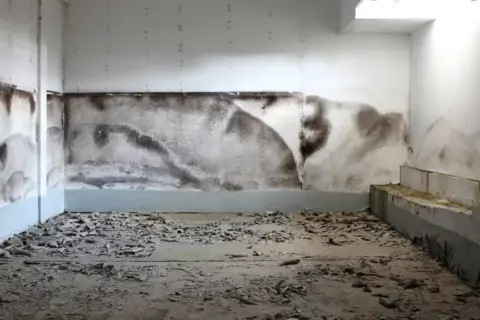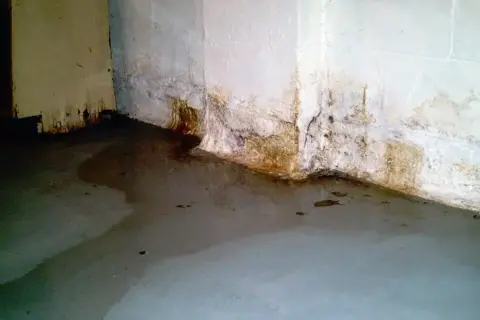Basement System Improvement
Your home’s basement, often tucked away out of sight, plays a pivotal role in maintaining the structural integrity of your residence. It’s a versatile space that can serve as a storage area, a recreation room, or even an additional living space when properly maintained. Yet, it’s all too easy to overlook its needs. In this comprehensive guide, we’ll embark on a journey to uncover the key signs that signify a pressing need for basement system improvement.
A dry and well-ventilated basement isn’t just a convenience; it’s essential for your home’s overall health and safety. Neglecting your basement can lead to a host of issues, ranging from unsightly dampness to the insidious growth of mold and even the quiet devastation of dry rot. By staying vigilant and proactive, you can transform your basement into a clean, dry, and functional space that enhances the value and comfort of your home.
Let’s dive deep into the heart of this matter, exploring the six unmistakable signs that your basement systems are crying out for attention foundation repair and improvement. From the pooling of water to the peeling of paint, each of these signals is a crucial piece of the puzzle. Together, we’ll not only identify these issues but also offer insights and solutions to help you restore, repair, and maintain a basement that’s both a practical asset and a haven for your family’s well-being.

1. Water Pools in the Basement: A Cry for Help
Imagine stepping into your basement and finding unexpected pools of water on the floor. This is a distress signal that your basement systems desperately need your attention. It’s not just about the inconvenience of mopping up water; it’s a clear indication that something more sinister is at play.
Understanding the Problem:
The presence of water in your basement suggests that moisture is infiltrating your underground space. This moisture can enter flooded basement through various avenues, including cracks in the basement’s floor or walls, gaps in the basement finishing foundation, or even poor drainage systems around your home. Left untreated, these issues can lead to significant problems that threaten the stability of your home.
The Consequences of Neglect:
Ignoring these water pools can have dire consequences. Initially, it might seem like a minor nuisance, but over time, the problem can escalate. As more water accumulates in foundation cracks, it can compromise the structural integrity of your basement’s walls and flooring. This may result in cracks becoming more extensive, and, in severe cases, even foundation damage.
Taking Action:
The first step in addressing this issue is to identify the source of the water infiltration. Are there visible cracks in your basement’s walls or floor? Is the problem related to poor drainage around your home? Once you pinpoint the source, it’s essential to take corrective action promptly.
Repairing cracks and implementing effective basement waterproofing measures are vital steps to prevent further water intrusion. This can include the installation of drainage systems, and sump pumps, and sealing vulnerable areas to ensure water is redirected away from your basement.
The Benefits of Resolution:
By addressing water pools in your basement, you not only prevent further damage but also create a healthier and safer living environment. A dry basement is less likely to foster mold growth, which can be harmful to your family’s health. Moreover, it enhances the utility of your basement, allowing you to utilize the space for various purposes without the constant worry of water damage.
2. Musty Odors: The Unwelcome Stench of Mold
Have you ever entered your basement only to be greeted by a stale, musty odor that seems to cling to things basementy and to the air? This unsettling scent is more than just a nuisance; it’s often a clear indicator of an underlying problem that demands your attention—mold.
Understanding the Problem:
Musty odors in your basement are typically the result of elevated humidity levels and the growth of mold. Mold spores are ever-present in the environment, and when they find a damp, dark, and poorly ventilated space, they thrive. Basements are a prime breeding ground for mold, making it crucial to address this issue promptly.
The Consequences of Neglect:
Apart from being unpleasant, mold carries significant health risks. Prolonged exposure to mold can lead to respiratory problems, allergies, and even more severe health issues. Additionally, mold can cause structural damage to your basement, affecting walls, floors, and any organic materials it encounters.
Taking Action:
Addressing musty odors and the presence of mold in the crawl space of your basement is essential for your family’s health and the longevity of your home. Here are the steps to take:
Identify the Source: Determine where the moisture is coming from. It could be due to water infiltration, poor ventilation, or high humidity levels.
Increase Ventilation: Improve airflow in your basement by installing exhaust fans, dehumidifiers, or an efficient HVAC system. Adequate ventilation helps prevent mold growth.
Basement Waterproofing: Consider professional basement waterproofing services to seal any cracks or gaps that may be allowing moisture to seep in.
Mold Remediation: If you discover mold growth, consult a mold remediation specialist. They can safely and thoroughly remove the mold and provide recommendations for permanent solutions to prevent its return.
The Benefits of Resolution:
Addressing musty odors and mold not only improves the air quality in your home but also ensures a safer and more comfortable living environment. Your family will breathe easier, and you’ll reduce the risk of health issues associated with mold exposure. Moreover, by tackling the root cause of the problem, you prevent further structural damage to your basement, preserving its integrity.
3. Visible Mold: A Stealthy Intruder
As you navigate your basement, you might come across a troubling sight – patches of mold, lurking in the shadows. The presence of visible mold is more than just an unsightly inconvenience; it’s a clear indication that your basement is facing a severe issue that requires immediate attention.
Understanding the Problem:
Mold is a resilient and opportunistic microorganism that thrives in damp, humid environments. When excess moisture accumulates in the areas nearby your basement, it creates the ideal breeding ground for mold growth. These unsightly patches can appear on walls, ceilings, floors, and even on your belongings.
The Consequences of Neglect:
Allowing mold to persist in your basement can lead to a cascade of problems. First and foremost, mold can pose serious health risks to you and your family. Prolonged exposure to mold spores can trigger allergies, respiratory issues, and other health complications. Moreover, mold can silently damage the structural components of your basement, potentially compromising the stability of your entire home.
Taking Action:
Dealing with visible mold is a two-fold process that involves both remediation and prevention. Here’s how to address this stealthy intruder:
Mold Remediation: Hire a professional mold remediation service company or specialist to safely and thoroughly remove the mold. They have the expertise and equipment to handle the task effectively, minimizing the risk of spore dispersion.
Identify and Eliminate Moisture Sources: To prevent mold from returning, it’s crucial to identify and eliminate the sources of excess moisture. This may involve basement waterproofing, fixing leaks, improving ventilation, and reducing humidity levels.Regular Inspections: Establish a routine for inspecting your basement for any signs of mold or moisture issues. Early detection can prevent mold from gaining a foothold.
The Benefits of Resolution:
Addressing visible mold not only improves the aesthetics of the crawl space repair your basement but also ensures a safer and healthier living environment. Your family will breathe easier, free from the potential health hazards associated with mold exposure. Additionally, by eradicating mold and addressing its underlying causes, you protect the foundation repair your home from structural damage and costly repairs down the road.
4. Peeling Paint: A Symptom of Moisture Woes
Have you noticed that the paint on your basement walls is starting to peel and flake away? While it may seem like a cosmetic issue at first glance, peeling paint is often a telling symptom of underlying moisture problems that demand your immediate attention.
Understanding the Problem:
Paint on basement walls can begin to peel due to excessive moisture. When moisture infiltrates the porous materials of the walls, it can cause the paint to lose its adhesion, leading to unsightly peeling and flaking.
The Consequences of Neglect:
Peeling paint is not merely an aesthetic concern. It’s a visible indication that your basement is facing significant moisture-related issues. Left unaddressed, these problems can worsen, potentially leading to structural damage, mold growth, and even compromising the overall integrity of your basement and home.
Taking Action:
Addressing peeling paint is essential to how homeowners prevent further damage and maintain a safe, dry, and comfortable living environment. Here’s how to tackle this issue effectively:
Identify the Source: Determine where the moisture is coming from. Inspect your basement for visible cracks or leaks that may be allowing water to seep in.
Basement Waterproofing: Consult with a professional basement waterproofing specialist to identify, repair and seal any cracks or gaps in your basement’s foundation, walls, or floors.
Repainting: Once the underlying moisture issue is resolved, you can repaint your basement walls. Be sure to use moisture-resistant paint and primer designed for wet basement environments.
Maintain Proper Ventilation: Improve airflow in your basement by installing exhaust fans, dehumidifiers, or an efficient HVAC system. Adequate ventilation helps to control humidity levels and prevent moisture buildup.
The Benefits of Resolution:
Addressing peeling paint not only restores the aesthetics of your basement but also ensures a healthier living environment. By effectively managing moisture, you prevent mold growth, protect the structural integrity of your basement, and avoid costly repairs in the future.
5. Condensation on Windows: A Warning of Dampness
Imagine walking into your basement and noticing a hazy layer of condensation on the windows. While condensation is a common occurrence in some parts of your home, such as the bathroom after a hot shower, it should not be a regular sight in your basement. When you see condensation on basement windows, it’s a clear indication of dampness and an issue that merits immediate attention.
Understanding the Problem:
Condensation forms when warm, moisture-laden air comes into contact with cooler surfaces like windows. In the basement, this can occur when there is a temperature difference between the interior and exterior of the windows. Dampness in the basement air increases the likelihood of condensation.
The Consequences of Neglect:
While condensation itself might seem harmless, it’s often a sign of an underlying problem – excess humidity or moisture in the basement. This dampness can lead to a range of issues, including mold growth, damage to wooden structures, and the potential for water damage if not addressed.
Taking Action:
Addressing condensation on basement windows involves controlling the humidity levels and improving ventilation. Here’s what you can do:
Dehumidification: Invest in a high-quality dehumidifier designed for basement use. This will help reduce excess moisture in the air.
Proper Ventilation: Ensure your basement is adequately ventilated. Consider installing exhaust fans or an HVAC system to improve airflow.
Sealing Windows: Check for any gaps or leaks around your basement windows and seal them to prevent exterior moisture from entering.
Insulating Windows: Installing insulated windows can help reduce the temperature differential that leads to condensation.
Monitor Humidity: Use a hygrometer to monitor humidity levels in your basement. Aim for a range of 30-50% relative humidity.
The Benefits of Resolution:
By addressing condensation on basement windows and the underlying dampness, you create a more comfortable and healthier living space. This proactive approach helps prevent the development of mold, protects wooden structures from damage, and preserves the overall integrity of your basement.
Key Signs to Watch For

In conclusion, a well-maintained basement is not only essential for the structural integrity of your home but also for the health and safety of your family. The six signs discussed in this guide—pools of water, musty odors, visible mold, peeling paint, condensation on windows, and dry rot—are clear indicators that your basement systems require attention and improvement.
Ignoring these signs can lead to a cascade of problems, from structural damage to health hazards like mold growth. However, by proactively addressing these issues through basement waterproofing, moisture control, ventilation, and remediation measures, you can transform your basement into a dry, safe, and usable space that enhances your home’s value and your family’s well-being.
Don’t delay—act promptly to safeguard your basement and crawl space to ensure it remains an asset rather than a liability in your home.
Contact the Professionals at Everdry Waterproofing of Pittsburgh Today! 832-294-5462


